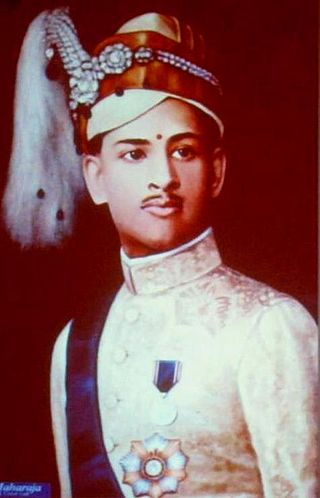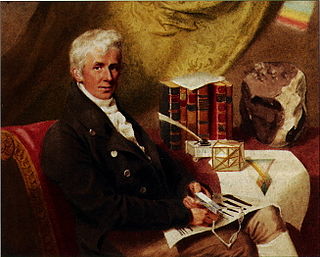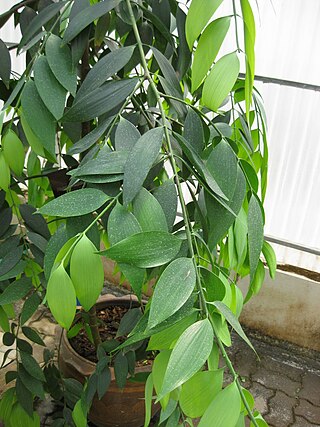
The Kingdom of Travancore, also known as the Kingdom of Thiruvithamkoor, was an Indian kingdom from c. 1729 until 1949. It was ruled by the Travancore Royal Family from Padmanabhapuram, and later Thiruvananthapuram. At its zenith, the kingdom covered most of the south of modern-day Kerala and the southernmost part of modern-day Tamil Nadu with the Thachudaya Kaimal's enclave of Irinjalakuda Koodalmanikyam temple in the neighbouring Kingdom of Cochin. However Tangasseri area of Kollam city and Anchuthengu near Attingal in Thiruvananthapuram were parts of British India.

Sree Padmanabhadasa Sree Chithira Thirunal Balarama Varma, popularly known as Sree Chithira Thirunal, was the last ruling Maharaja of the Indian princely state of Travancore, in southern India until 1949 and later the Titular Maharajah of Travancore until 1991. His reign is known for several notable reforms that have indelible impact on the society and culture of Kerala.

James Sowerby was an English naturalist, illustrator and mineralogist. Contributions to published works, such as A Specimen of the Botany of New Holland or English Botany, include his detailed and appealing plates. The use of vivid colour and accessible texts were intended to reach a widening audience in works of natural history. The standard author abbreviation Sowerby is used to indicate this person as the author when citing a botanical name.

A botanical name is a formal scientific name conforming to the International Code of Nomenclature for algae, fungi, and plants (ICN) and, if it concerns a plant cultigen, the additional cultivar or Group epithets must conform to the International Code of Nomenclature for Cultivated Plants (ICNCP). The code of nomenclature covers "all organisms traditionally treated as algae, fungi, or plants, whether fossil or non-fossil, including blue-green algae (Cyanobacteria), chytrids, oomycetes, slime moulds and photosynthetic protists with their taxonomically related non-photosynthetic groups ."
Mar Ivanios College is an autonomous educational institution situated in Thiruvananthapuram, Kerala, India. The college was ranked as 45th best college in the country by Ministry of Education's National Institutional Ranking Framework in 2023, 48th in 2020. In 2023, the college improved its ranking by 5 places and became the 45th best college in the country.

Rama Varma I often referred to as Dharma Raja, was the Maharajah of Travancore from 1758 until his death in 1798. He succeeded his uncle Marthanda Varma, who is credited with the title of "maker of modern Travancore". During his reign Dharma Raja not only retained all the territories his predecessor had gained but administered the kingdom with success. He was addressed as Dharma Raja on account of his strict adherence to Dharma Sastra, the Hindu principles of justice by providing asylum to thousands of Hindus and Christians fleeing Malabar during the Mysorean conquest of Malabar.

Velayudhan Chempakaraman Thampi ofThalakulam (1765–1809) was the Dalawa or Prime Minister of the Indian kingdom of Travancore between 1802 and 1809 during the reign of Bala Rama Varma Kulasekhara Perumal. He is best known for being one of the earliest individuals to rebel against the British East India Company's authority in India.

Nageia wallichiana is a species of conifer in the family Podocarpaceae. It is a tree 10–54 m high, found in Brunei, Cambodia, China, India, Indonesia, Laos, Malaysia, Myanmar, Thailand, and Vietnam. Nageia wallichiana is the most widely distributed species among the seven species in the genus Nageia. If the land areas of China and Japan are excluded, its distribution nearly coincides with that of the genus and includes both the western outliers in India and the easternmost part on Normanby Island. It is one of the most extensive conifer ranges recognized and is similar to Dacrycarpus imbricatus and Podocarpus neriifolius.

Visakham Thirunal Rama VarmaFRAS was the Maharaja of the erstwhile Indian kingdom of Travancore from 1880 to 1885 AD. He succeeded his elder brother Maharajah Ayilyam Thirunal to the throne of Travancore.

In biology, taxonomic rank is the relative level of a group of organisms in an ancestral or hereditary hierarchy. A common system of biological classification (taxonomy) consists of species, genus, family, order, class, phylum, kingdom, and domain. While older approaches to taxonomic classification were phenomenological, forming groups on the basis of similarities in appearance, organic structure and behaviour, methods based on genetic analysis have opened the road to cladistics.

The Travancore royal family was the ruling house of the Kingdom of Travancore. They had to give up their ruling rights in 1949 when Travancore merged with India and their political pension privileges were abolished in 1971. The family is descended from the Ay/Venad family and the Chera dynasty.
St. Thomas College, Kozhencherry is a government-aided college in Kozhencherry, Kerala state, South India. Established in 1953, it is administered by the Mar Thoma Syrian Church. Juhanon Mar Thoma Metropolitan and K. T. Thomas, Kurumthottickal, the veteran Minister of the Parish of Kozhencherry were involved in founding the college. Joseph Mar Thoma Metropolitan, the present head of the Mar Thoma Church, is the manager of the college.

Scott Christian College is an autonomous, co-educational, arts and science college in Nagercoil, Tamil Nadu. Run by the Diocese of Kanyakumari of the Church of South India, the college is graded "A" under National Assessment and Accreditation Council (NAAC) rankings in India and is rated 5-star.

Kanakakkunnu Palace is situated in Thiruvananthapuram near the Napier museum, India. It is India's first digital garden, created by Akhilesh S. V. Nair and A. Gangaprasad, University of Kerala, Department of Botany.
Parappanad was a former feudal city-state in Malabar, India. The headquarters of Parappanad Royal family was at the town Parappanangadi in present-day Malappuram district. In 1425, the country divided into Northern Parappanad and Southern Parappanad. Southern Parappanad included parts of Tirurangadi Taluk and the town Parappanangadi. Northern Parappanad included Panniyankara, Beypore, and Cheruvannur of Kozhikkode Taluk. Parappanad royal family is a cousin dynasty of the Travancore royal family.

Major General William Cullen was a British Army Officer with the Madras Artillery Regiment, and from 1840 to 1860, Resident in the Kingdom of Travancore and Cochin. During his stay in India, he took a scholarly interest in the region and contributed to journals on geology, plants and the culture of the region. He was instrumental in establishing the Napier Museum in Trivandrum. He died at Allepey in Kerala, where a road is named after him.

Cullenia exarillata is a flowering plant evergreen tree species in the family Malvaceae endemic to the rainforests of the southern Western Ghats in India. It is one of the characteristic trees of the mid-elevation tropical wet evergreen rainforests and an important food plant for the endemic primate, the lion-tailed macaque.

Colonel Heber Drury was a British army officer who worked in India and contributed to botany in his spare time. He published two books and several articles on botany and is commemorated in the name of the only peninsular Indian species of slipper orchid in the genus Paphiopedilum, P. druryi, which he collected in the hills of Agastyamalai.

Urva is a genus comprising the Asian mongooses within the mongoose family Herpestidae. Species in the genus were formerly classified in the genus Herpestes, which is now thought to comprise exclusively African mongooses; phylogenetic evidence indicates that the Asian mongooses form a monophyletic group and had an Asian common ancestor. Urva forms a clade with Xenogale and Atilax, while Herpestes forms a clade with all other African mongoose species.
















